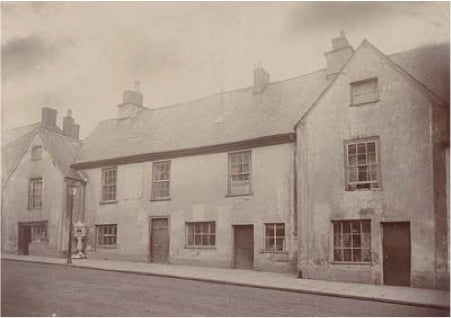ABERGAVENNY’S Plas Gunter Mansion has been awarded a £222,340 development grant by The National Lottery Heritage Fund to start the ball rolling to conserve and transform the house into a fascinating visitor experience.
Plas Gunter Mansion Trust is receiving initial support from The National Lottery Heritage Fund to develop plans for a major project to renovate the 17th century town house located in Cross Street in Abergavenny, it has been announced.
Made possible by National Lottery players, the grant will allow the Trust to create detailed restoration plans, develop ideas, including events and activities, which engage more people in the heritage of Gunter Mansion whilst strengthening ties with the local community. It will also be used crucially, to seek over £600,000 of match funding to help deliver the overall vision.
By carrying out targeted preparation the Trust will make a full application for a Heritage Fund delivery grant of £2.7 million by December 2025.
If successful, the delivery grant will enable the full project to begin. This will include essential conservation work and the creation of an exhibition space which will bring the mansion’s fascinating history alive for the community and visitors to the Monmouthshire town.
Two commercial spaces for local businesses in the building will also be upgraded so that they generate an income, helping the building to become financially sustainable.
Physical work on the building is still over two years away, but eventually there will be a range of educational and social activities, including training for volunteers to act as guides for the exhibition, and the opportunity for an apprenticeship in traditional building crafts and conservation. At present it is anticipated that the refurbished building will re-open in 2027.
The Grade II* listed building is of national – and international – significance because of its role in the political and religious struggles of the 1670s.
In 1907, local builders discovered a secret chapel in the attic of the house where Catholics worshipped at a time when it was illegal and dangerous to do so. Recusants – those not conforming to the religious practices of the Anglican Church – could be punished with death.

It is the only known recusant chapel that exists in Wales and one of the best surviving examples in the whole of Britain.
The priest who led the secret Catholic services in the attic chapel was the son of the first headmaster of King Henry VIII Grammar School in Abergavenny. Father David Lewis was denounced to Parliament by priest-hunter, John Arnold of Llanfihangel Court, near Abergavenny and was arrested, hung, drawn and quartered at Usk on 27 August 1679. Later canonised, Saint David Lewis was Wales’ last Catholic martyr.
Commenting on the award, Owen Davies, Chair of Plas Gunter Mansion Trust said: “The potential of our project to engage more people with heritage, boost the local economy and make Abergavenny a better place to live, work and visit is considerable. We will open the most historic parts of the building to the public for the first time and reveal a capsule of stories from the past 400 years. Local, national and international visitors will be able to learn more about the history and cultural identity of Abergavenny and its relevance to the wider themes of persecution, tolerance and sanctuary which are particularly pertinent today”.
He added: “I’d also like to thank the local organisations which have supported us including Monmouthshire County Council, the Town Council, Our Lady and St Michael’s and St Mary’s churches, King Henry VIII School and teams of committed volunteers who have helped keep alive the dream of restoring the mansion for our community.”
Andrew White, Director of Wales for The National Lottery Heritage Fund said: “We are delighted to support Plas Gunter Mansion Trust with this initial grant to help with the preservation of this important heritage building. Thanks to money raised by National Lottery players, this project will enable the Trust to work towards safeguarding this important local landmark for future generations and provide opportunities for its story to be shared.”




Comments
This article has no comments yet. Be the first to leave a comment.